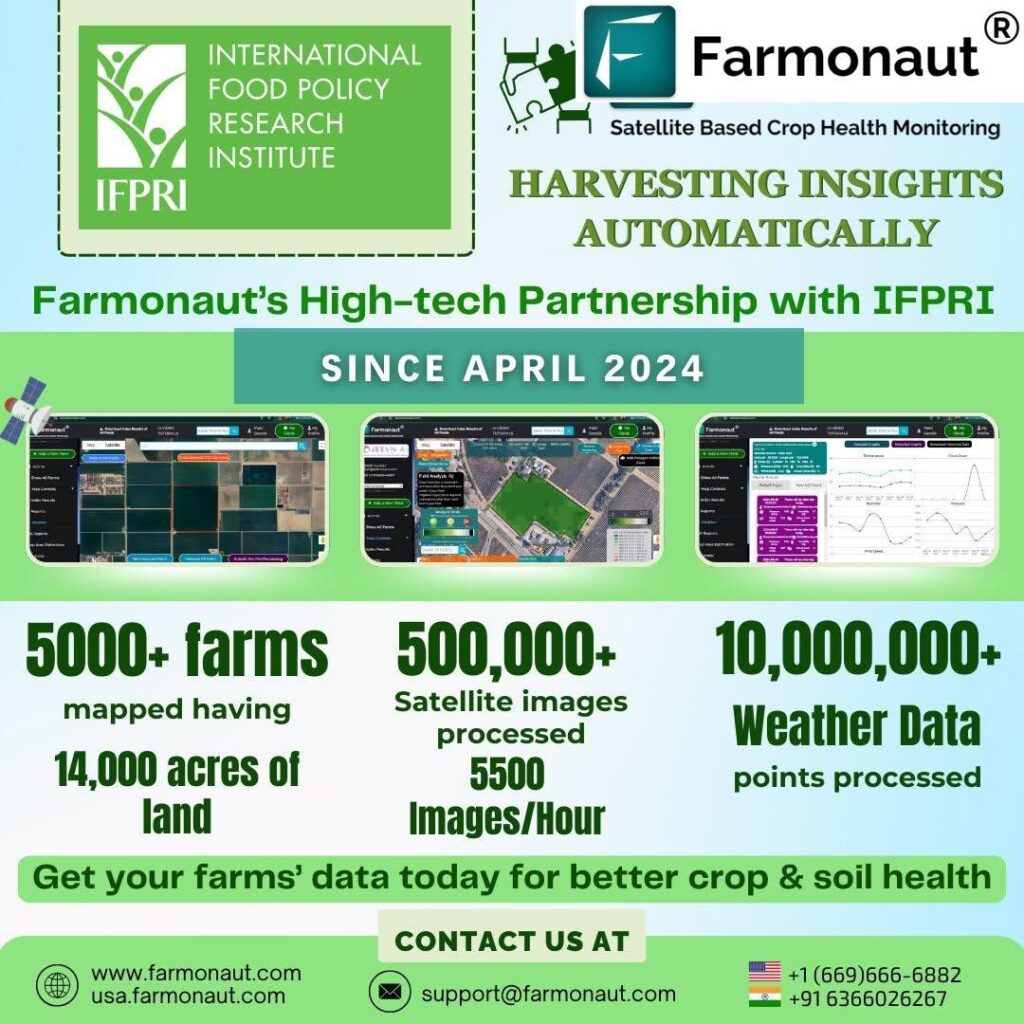US Ethanol Production Hits 3-Month Low: Impact on Agricultural Markets and Corn Utilization

“US ethanol production hit a 3-month low, impacting corn utilization in agricultural markets by an estimated 5-10%.“
In recent weeks, the US agricultural sector has witnessed a significant shift in ethanol production trends, with output reaching a three-month low. This development has sent ripples through the industry, affecting corn utilization, market dynamics, and the broader agricultural landscape. As we delve into this complex issue, we’ll explore the multifaceted implications for farmers, agribusinesses, and the renewable energy sector.
Understanding the Ethanol Production Downturn
The recent dip in ethanol production is not an isolated event but rather a culmination of various factors influencing the agricultural and energy markets. To comprehend the full scope of this trend, we need to examine several key aspects:
- Seasonal Maintenance: Many ethanol plants undergo routine maintenance during this period, contributing to the temporary reduction in output.
- Market Dynamics: Fluctuations in corn prices and gasoline demand play crucial roles in determining ethanol production levels.
- Government Policies: Renewable fuel standards and export policies significantly impact the ethanol industry’s performance.
As we analyze these factors, it’s essential to consider how they interplay with broader agricultural trends and technologies. For instance, precision farming technologies have been instrumental in optimizing corn yields, which directly feeds into ethanol production capabilities.
Impact on Corn Utilization and Agricultural Markets
The downturn in ethanol production has immediate consequences for corn utilization. Historically, the ethanol industry has been a significant consumer of U.S. corn crops, with approximately 35% of corn production dedicated to ethanol in recent years. The current slowdown is likely to affect this balance, potentially leading to:
- Increased corn inventories
- Pressure on corn prices
- Shifts in crop rotation decisions for the upcoming planting season
To illustrate these trends, let’s examine a data comparison of recent ethanol production and corn utilization:
| Month | Ethanol Production (million gallons) | Corn Used for Ethanol (million bushels) | Corn Price ($/bushel) | Ethanol Inventory (million gallons) |
|---|---|---|---|---|
| October | 1,250 | 425 | 3.80 | 890 |
| September | 1,300 | 440 | 3.75 | 920 |
| August | 1,350 | 460 | 3.70 | 950 |
| July | 1,400 | 475 | 3.65 | 980 |
| June | 1,450 | 490 | 3.60 | 1,010 |
| May | 1,500 | 510 | 3.55 | 1,040 |
This data clearly demonstrates the downward trend in ethanol production and its corresponding impact on corn utilization. Farmers and agribusinesses must stay informed about these trends to make strategic decisions for their operations.
Precision Farming Technologies: A Buffer Against Market Volatility
In the face of market uncertainties, precision farming technologies have emerged as crucial tools for maintaining profitability and efficiency. These advanced agricultural methods help farmers optimize their resources and improve crop yields, even when faced with challenging market conditions.
One such technology that has gained significant traction is satellite-based crop monitoring. Platforms like Farmonaut provide farmers with real-time insights into crop health, allowing for more precise decision-making regarding irrigation, fertilization, and pest control. This level of precision can help mitigate some of the risks associated with market fluctuations by ensuring optimal crop management.
USDA Crop Projections and Their Implications
“USDA crop projections suggest a 2-3% shift in irrigation practices due to recent ethanol production trends.“
The United States Department of Agriculture (USDA) plays a crucial role in providing crop projections that guide industry decisions. Recent USDA reports have indicated potential shifts in crop production patterns in response to the ethanol market dynamics. These projections have far-reaching implications for various aspects of agriculture, including:
- Irrigation practices
- Pest control strategies
- Crop diversification efforts
For instance, the projected 2-3% shift in irrigation practices could lead to significant changes in water management across corn-producing regions. Farmers may need to reevaluate their irrigation systems and consider implementing more water-efficient technologies to adapt to these changing conditions.
The Role of GIS in Agricultural Decision-Making
Geographic Information Systems (GIS) have become indispensable tools in modern agriculture, especially when dealing with market uncertainties. GIS applications allow farmers and agricultural planners to:
- Analyze spatial data for optimal crop placement
- Monitor crop health across large areas
- Plan efficient resource allocation based on geographical factors
By integrating GIS data with market trends and ethanol production information, farmers can make more informed decisions about crop allocation and resource management. This integration of technology and market intelligence is crucial for maintaining profitability in a volatile agricultural landscape.
Explore Farmonaut’s API for advanced agricultural data integration
Ethanol Inventory Management: Balancing Supply and Demand
The current dip in ethanol production has brought inventory management into sharp focus. Ethanol producers must carefully balance their inventories to avoid oversupply while ensuring they can meet demand when production rebounds. This balancing act involves:
- Careful monitoring of market signals
- Strategic storage decisions
- Coordination with corn suppliers and gasoline blenders
Advanced inventory management systems, often integrated with precision farming data, can help producers navigate these challenges more effectively. By leveraging real-time data on crop yields, market demand, and storage capacities, ethanol producers can make more agile decisions in response to market fluctuations.
The Interplay Between Renewable Energy and Agriculture
The ethanol industry stands at the intersection of renewable energy and agriculture, making it a critical component of both sectors. The current production slowdown highlights the complex relationships between:
- Energy policies
- Agricultural practices
- Environmental considerations
As we navigate this period of reduced ethanol output, it’s essential to consider the broader implications for renewable energy goals and agricultural sustainability. This situation may prompt policymakers to reevaluate incentives and regulations surrounding biofuels and crop production.
Global Agricultural Trends: Beyond Ethanol
While the US ethanol market is experiencing a downturn, it’s crucial to contextualize this within global agricultural trends. Other significant developments in the international agricultural landscape include:
- Canola Harvests: Recent reports indicate strong canola yields in major producing countries, potentially affecting global oilseed markets.
- Poultry Farming: Innovations in poultry farming techniques are leading to increased efficiency and production in many regions.
- Biosecurity Measures: Heightened focus on biosecurity in livestock farming is shaping industry practices worldwide.
These global trends interact with local markets, including the US ethanol and corn sectors, creating a complex web of agricultural and economic relationships.
Innovations Shaping the Future of Farming
As the agricultural sector grapples with market challenges, technological innovations continue to drive progress and efficiency. Some of the cutting-edge developments shaping the future of farming include:
- AI-driven crop management systems
- Drone technology for precision agriculture
- Blockchain for supply chain transparency
- Advanced weather forecasting models
These innovations are not only improving farm productivity but also enhancing the resilience of agricultural systems in the face of market fluctuations and climate change.
Impact on Rural Economies and Food Production
The ripple effects of the ethanol production slowdown extend beyond the immediate agricultural markets, touching rural economies and food production systems. Key considerations include:
- Employment in ethanol plants and related industries
- Local tax revenues derived from ethanol production
- Potential shifts in land use and crop diversity
Rural communities heavily invested in corn production and ethanol manufacturing may need to explore diversification strategies to maintain economic stability during market fluctuations.
Government Policies and Conservation Efforts
The interplay between ethanol production, agricultural practices, and environmental conservation is complex and often guided by government policies. Current trends may lead to policy reassessments in areas such as:
- Renewable fuel standards
- Agricultural subsidies
- Conservation programs
Policymakers must balance the needs of the agricultural sector, energy security goals, and environmental conservation efforts as they navigate these challenges.
Adapting to Market Changes: Strategies for Farmers
In light of the current market conditions, farmers may need to adopt various strategies to maintain profitability and resilience:
- Diversification of crops to reduce dependence on corn prices
- Implementation of precision farming techniques to optimize resource use
- Exploration of alternative markets for corn and other crops
- Investment in storage facilities to better manage inventory and timing of sales
By embracing these strategies and leveraging advanced agricultural technologies, farmers can better position themselves to weather market fluctuations.
The Road Ahead: Projections and Possibilities
As we look to the future, several factors will influence the trajectory of ethanol production and its impact on agricultural markets:
- Technological advancements in biofuel production
- Shifts in consumer preferences for renewable energy
- Global trade dynamics affecting corn and ethanol markets
- Climate change impacts on crop yields and production patterns
Staying informed about these trends and adapting to changing conditions will be crucial for all stakeholders in the agricultural and energy sectors.
Conclusion: Navigating Uncertainty with Technology and Innovation
The current dip in US ethanol production serves as a reminder of the interconnectedness of agricultural markets, energy policy, and technological innovation. While challenges persist, the agricultural sector has repeatedly demonstrated its resilience and adaptability.
By embracing precision farming technologies, leveraging data-driven insights, and staying attuned to market trends, farmers and agribusinesses can navigate these uncertain times more effectively. The integration of advanced tools like satellite-based crop monitoring, GIS applications, and AI-driven advisory systems will be crucial in optimizing production, managing resources, and maintaining profitability.
As we move forward, the collaboration between technology providers, policymakers, and agricultural stakeholders will be essential in shaping a sustainable and prosperous future for the industry. The current situation, while challenging, also presents opportunities for innovation and growth in the ever-evolving landscape of agriculture and renewable energy.
FAQ Section
Q: How does the recent drop in ethanol production affect corn farmers?
A: The decrease in ethanol production can lead to reduced demand for corn, potentially lowering prices and affecting farmers’ income. However, the impact may vary depending on individual farm diversification and market strategies.
Q: What role do precision farming technologies play in mitigating market fluctuations?
A: Precision farming technologies help farmers optimize resource use, improve crop yields, and make data-driven decisions. This can increase efficiency and profitability, providing a buffer against market volatility.
Q: How might government policies change in response to the current ethanol market situation?
A: Policymakers may reassess renewable fuel standards, agricultural subsidies, and conservation programs to balance the needs of the agricultural sector, energy security, and environmental conservation.
Q: What are some strategies farmers can use to adapt to changing ethanol market conditions?
A: Farmers can diversify their crops, implement precision farming techniques, explore alternative markets for their produce, and invest in storage facilities to better manage inventory and sales timing.
Q: How does the ethanol production slowdown impact rural economies?
A: Rural economies may experience effects on employment in ethanol plants and related industries, changes in local tax revenues, and potential shifts in land use and crop diversity.
Explore Farmonaut’s API Developer Docs for advanced integration options

















